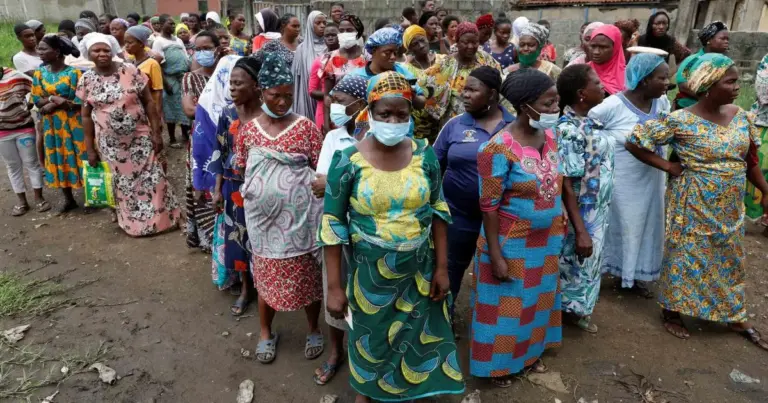Nigeria’s economy is flashing signs of recovery: inflation is easing, the naira has strengthened, and foreign reserves are at their highest in six years. Yet, for millions of Nigerians, daily living costs remain punishingly high, exposing the widening gap between encouraging macroeconomic indicators and the lived realities of households.
Economic Bright Spots at the Policy Level
The National Bureau of Statistics (NBS) reports that inflation, which peaked at 34.8% in December 2024, slowed to 20.12% by August 2025 after adjustments to the inflation basket. Food inflation, a critical driver, also eased slightly to 21.87%. At the same time, the naira has gained ground, climbing from lows of ₦1,900 per dollar in 2024 to about ₦1,490—its strongest level in over a year. Foreign reserves have risen to $42.3 billion, a threshold not seen since 2019.
Policy makers have responded with optimism. President Bola Tinubu recently declared that “the economy has turned the corner,” citing the Central Bank of Nigeria’s decision to cut its benchmark interest rate for the first time in five years as proof of renewed stability.
Limited Relief on the Ground
But in markets across Lagos, Kano, Abuja, and other cities, consumers see little improvement. Prices of rice, yams, and beans have moderated from record highs, but staples like bread and milk remain expensive. “A loaf of bread is still ₦1,500,” said Esther, a schoolteacher and mother of three. “It is better that it has stopped rising every week, but it’s still twice what I paid before 2023. My salary hasn’t changed.”
Economists explain that disinflation is not deflation—prices are still climbing, albeit more slowly. “The CPI has continued to rise, moving from 110.7 in January to 126.8 by August,” noted Abdulfatai Adedeji of the Centre for the Study of Economies of Africa (CSEA). “Households are still spending more to buy the same goods.”
Wages, Inequality, and the Cost-of-Living Squeeze
Experts point out that stagnant wages are deepening the crisis. While the minimum wage was lifted from ₦30,000 to ₦70,000 in mid-2024, implementation remains uneven across states, and many businesses in the private sector have struggled to comply. “Real wages are at historic lows,” said economist Simon Samson. “Even with slower inflation, households are not better off when incomes remain flat.”
Rising rents, school fees, and transport fares have further eroded purchasing power, forcing many families into what analysts call a “sachet economy,” where goods are bought in the smallest affordable quantities. “The middle class has been hollowed out,” observed Adetilewa Adebajo, CEO of CFG Advisory.
The Road Ahead
Analysts argue that inflation must fall much further—closer to 12%—before growth becomes inclusive and households feel tangible relief. Bismarck Rewane of Financial Derivatives Company illustrates the gap with hard numbers: a 50kg bag of rice cost ₦28,000 in 2020, peaked at ₦120,000 in 2024, and now sells for about ₦80,000. While this reflects progress, affordability remains far out of reach for many Nigerians.
Conclusion
Nigeria’s policymakers are right to claim progress: the numbers show stability returning. But for ordinary Nigerians, especially wage earners whose incomes have barely moved, the recovery remains distant. Until inflation slows to sustainable levels and wages rise in real terms, the gap between statistical improvement and everyday survival will continue to define the country’s fragile recovery.

